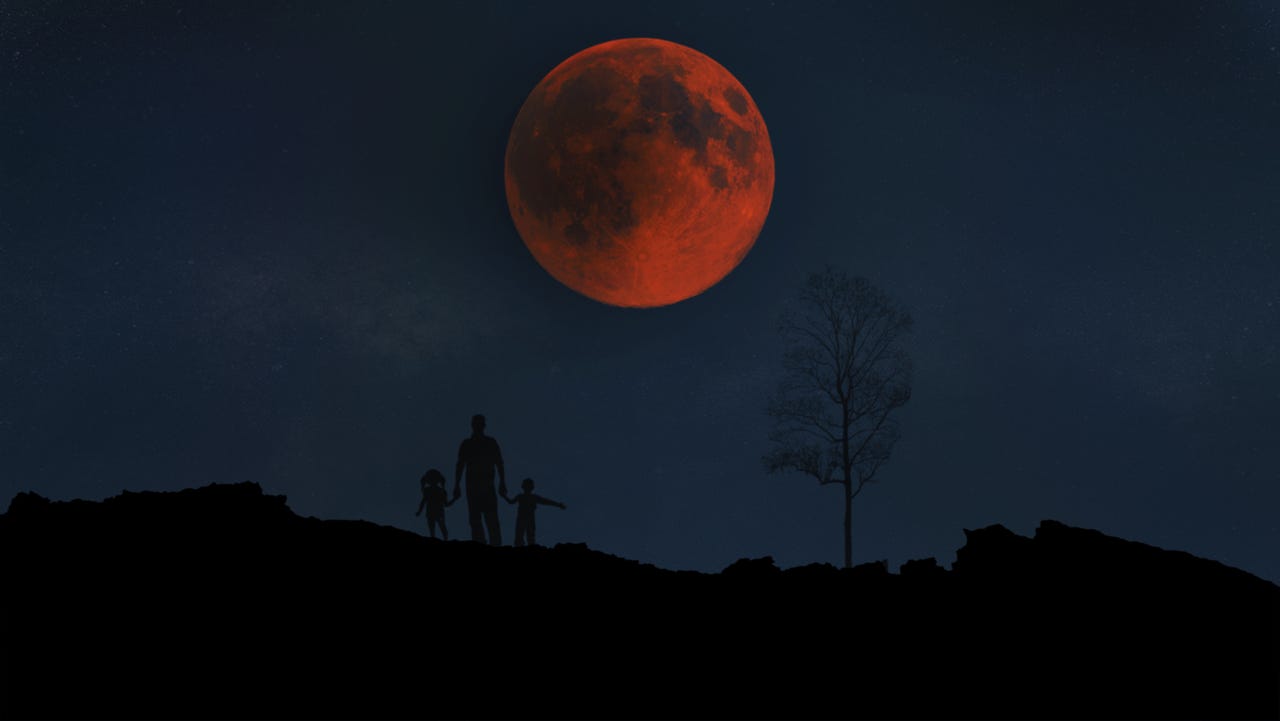































 Image: abhisheklegit/Getty Images
Image: abhisheklegit/Getty Images A total lunar eclipse is occurring on November 8, and it will be the last one for the next three years. If you want to take advantage of watching the full moon transform into a reddish hue, here is everything you need to know.
A lunar eclipse is when the sun, Earth, and moon align, and the Earth casts a complete shadow over the moon. When the moon falls under the darkest part of the Earth's shadow, the umbra, it turns a reddish hue -hence the term "Blood Moon."
If you live in eastern Asia, Australia, or the Pacific, portions of the Blood Moon spectacle will be visible to you.
The totality of the eclipse will be visible across North and Central America, as well as in Ecuador, Colombia, and western portions of Venezuela and Peru, according to NASA.
Also: NASA's uncrewed flight to the moon will be tracked by volunteers worldwide
The website Time and Date has an interactive eclipse map that is color-coded to designate exactly how much of the eclipse you can see, what times the lunar eclipse will be visible to you, and what the weather forecast is for that early morning.
So, if you are in an area where the Blood Moon is visible, how can you see it? The answer is simple -you just look up.
A nearly total lunar eclipse captured before dawn on November 19, 2021.
Image: Michoud Assembly Facility/NASAUnlike a solar eclipse, for which you need special eyewear, during the lunar eclipse, you can just look straight up at the sky. Despite not being necessary, a pair of binoculars or a telescope can always be helpful in getting a better view.
"You don't need any special equipment to observe a lunar eclipse, although binoculars or a telescope will enhance the view and the red color," said NASA. "A dark environment away from bright lights makes for the best viewing conditions."
If you live in an area that won't get much visibility or has lots of light pollution, don't fret: there are online-streaming options as well.
In the past, NASA has livestreamed the eclipse on its website. This year, there is no mention of NASA doing so, and on its site, it states: "Numerous organizations and individuals around the globe present livestreams and videos of lunar eclipses."
Also: What is the James Webb Space Telescope?
To find these livestreams, all you have to do is search "Lunar eclipse live stream" on either Google or YouTube, and a plethora of options will be available. A couple we found include Time and Date's live stream, Lowell Observatory's Live Stream, and Kopernik Observatory's Live Stream.
The livestreams will begin at around 4 AM ET on Tuesday, November 8. To find the most optimal time for you to look up at the sky, we recommend checking the map. The partial phase will begin in North America at 3:09 AM CST, with totality beginning at 4:16 AM and ending at 5:42 AM, according to NASA.
A lunar eclipse is when the Sun, Earth, and moon align, and the Earth casts a complete shadow over the moon. When the moon falls under the darkest part of the Earth's shadow, the umbra, it turns a reddish hue -- hence the term "Blood Moon".
The last total lunar eclipse for three years is occurring on Tuesday, Nov. 8, 2022. The exact time of visibility will depend on where you live, and we recommend checking Time and Date's visibility map. In North America, the action will begin in the early hours of the morning, with the partial eclipse beginning at 3:09 AM CST, and totality beginning at 4:16 AM and ending at 5:42 AM, according to NASA.
If you live in an area where the lunar eclipse is visible, all you have to do is look up at the night sky. If the eclipse isn't visible in your area, or if you simply don't want to get out of bed that early in the morning (we aren't judging), there are online-streaming options available as well. Some options include Time and Date's livestream, Lowell Observatory's Livestream, and Kopernik Observatory's Livestream.
 Hot Tags :
Our process
Innovation
Space
Hot Tags :
Our process
Innovation
Space